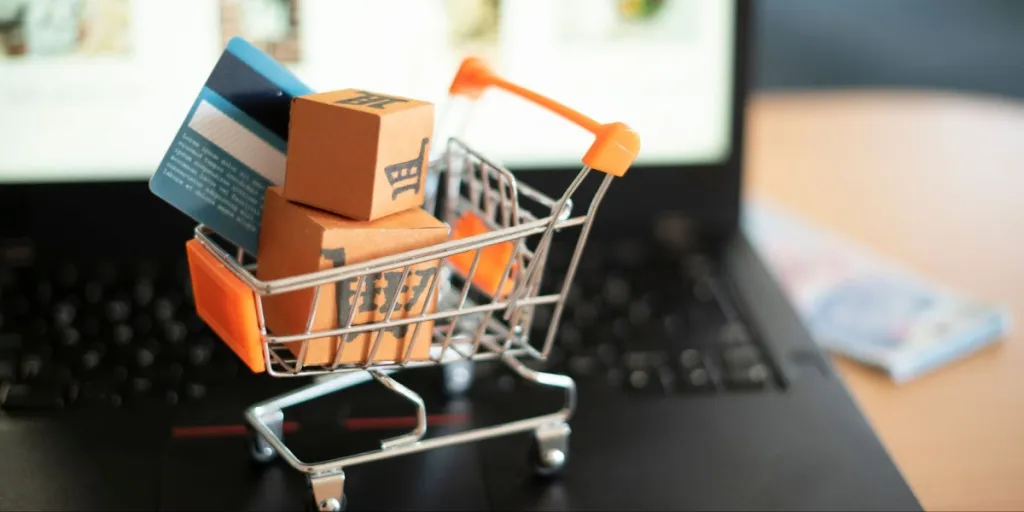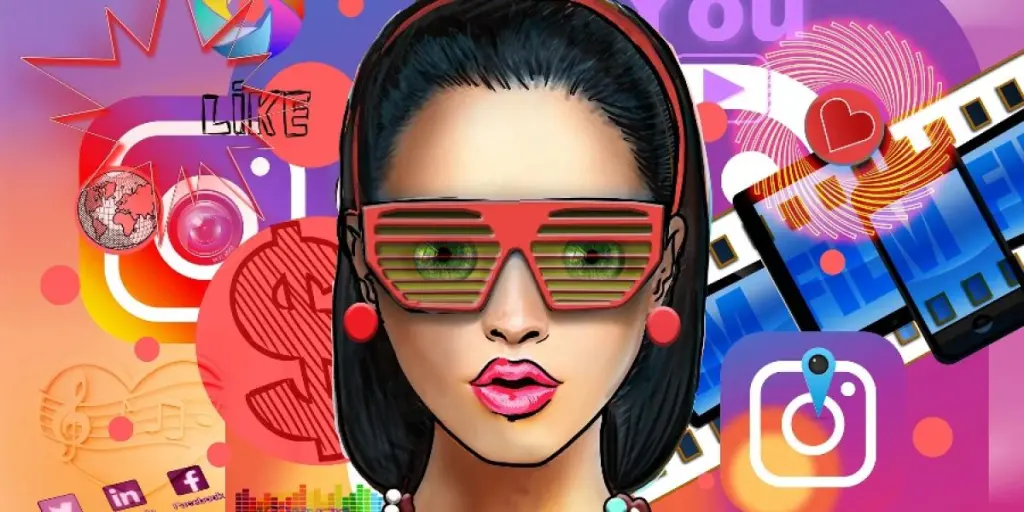If you’re an online merchant, you probably know that omnichannel marketing is all about connecting with customers in many ways.
But let’s dive a bit deeper into why it’s so important for making your ecommerce business thrive. Let’s explore the ins and outs of omnichannel marketing together, discover new strategies, and see why it’s a game-changer for boosting sales and building long-lasting relationships with our customers.
Here’s what you’ll find in this blog post:
- What omnichannel marketing is (omnichannel definition)
- What differentiates omnichannel from multichannel marketing
- How to create an omnichannel marketing strategy for your own business
- Omnichannel marketing examples
- Best omnichannel marketing tools
So, ready to level up?
What is omnichannel marketing?
Omnichannel marketing refers to the seamless integration of various online and offline marketing channels to create a cohesive and engaging brand experience for customers. These channels can include email, social media, apps, websites, and physical stores or events. websites, apps, social media, email, and physical stores.
Thus, the aim of omnichannel marketing is to create seamless messaging across channels. Each channel is supposed to work together to create a unified message and voice for your brand. For instance, an omnichannel marketing strategy would ban sending an SMS message about a particular product to someone who just purchased it.
Still scratching your head? A few simple omnichannel marketing examples might help clear the confusion:
- A customer receives an SMS message about a promotion while shopping in store
- A promotional email alerts recipients to check their mailbox for a physical postcard with coupons
- A shopper is retargeted on Facebook with the product they abandoned in their online shopping cart
Omnichannel vs. multichannel marketing
While both approaches involve using multiple channels to reach customers, the difference is the focal point of each strategy.
For example, omnichannel marketing focuses on creating a seamless, integrated experience for the customer across all touchpoints. In contrast, multichannel marketing uses various channels independently and focuses on the needs of the business itself.
Let’s visualize it to make it easier to digest:
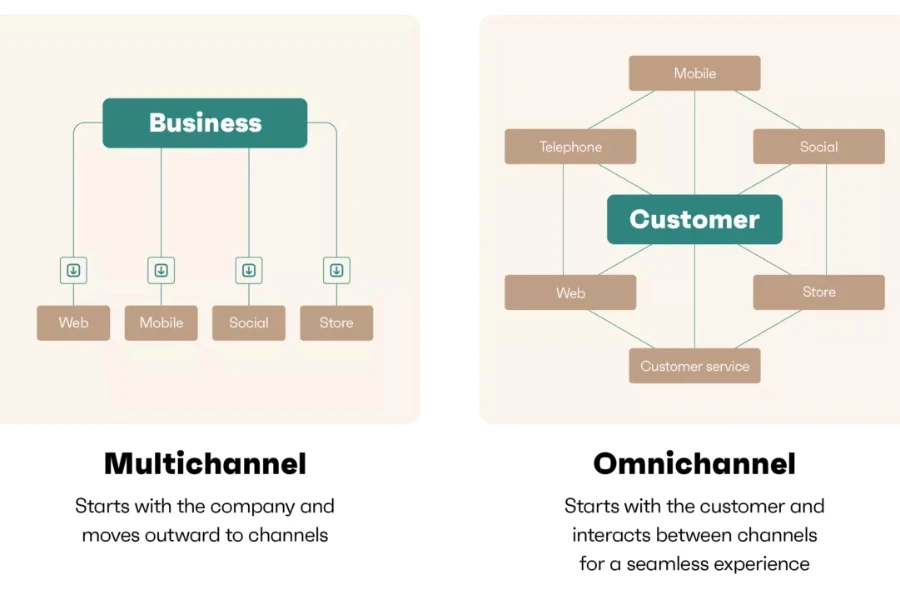
Multichannel marketing
- The brand is at the center of your marketing strategy
- Primarily static communication, with messages that are relatively the same, sent across several channels
- Channels don’t update and personalize to suit your customers’ needs
- Channels operate independently
Omnichannel marketing
- The customer is at the center of your marketing strategy
- The message changes and adapts to how the customer has interacted with your brand
- The customer’s behavior prompts updates to each channel
- Channels work together
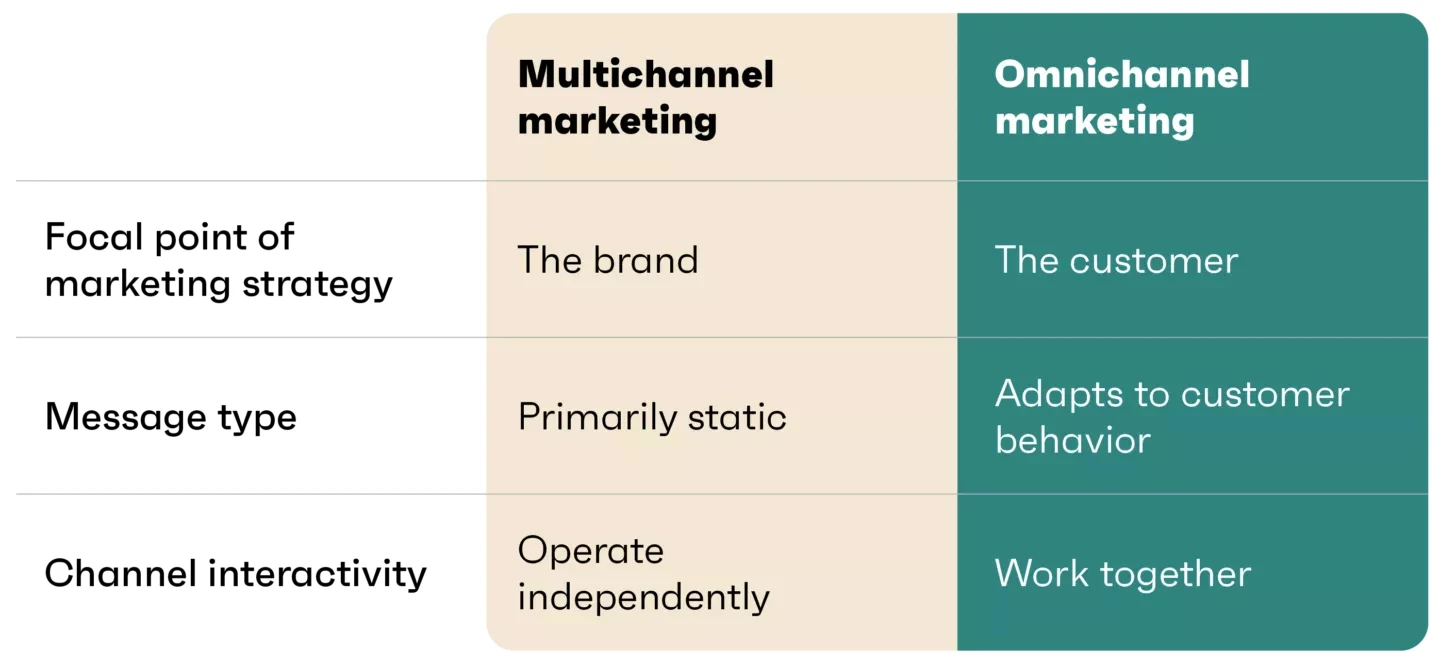
If there’s one key word to distinguish multichannel marketing from omnichannel marketing, it’s integration. Put simply, channels are interconnected.
Here’s a quick explainer video from our resident ecommerce expert to get you up to speed:
Benefits of an omnichannel marketing strategy
Experts say that the biggest benefit of omnichannel marketing for businesses is making marketing relevant for customers.
Here’s what Rytis Lauris, CEO and co-founder of Omnisend, has to say about this:
There is a level of personalization that can only be achieved by omnichannel marketing. When you provide this relevancy, customers respond better to it, they purchase more, and they come back more often.
Rytis Lauris, Omnisend CEO and co-founder
Omnisend’s own research supports Lauris’ claims that brands should focus on the customer by leveraging multiple channels in their communications, versus focusing on channels individually.
Omnisend’s multi-year analysis of billions of marketing campaigns found that omnichannel campaigns get:
- Higher engagement: In 2020, Omnichannel campaigns earned an 18.96% engagement rate. Those using single-channel campaigns saw a 5.4% engagement rate.
- Higher order rate: In 2021, omnichannel campaigns earned a 494% higher order rate than those depending on just one channel (0.83% versus 0.14%). Bonus: When you use SMS as one of the channels within an omnichannel marketing initiative, the conversion rate improves by 429%.
- Higher spend rate: On average, customers engaging with omnichannel campaigns spent 13% more than those engaging with single-channel campaigns.
- Higher customer loyalty: Marketers using omnichannel campaigns experienced a 90% higher retention rate than those using single-channel campaigns.
Omnichannel digital marketing can bring in the customers that are going to be most valuable to you or, better, transform your customers into more valuable customers. So this is definitely a tactic worth trying.
In other words:
Omnichannel is the real holy grail of marketing automation.
Rytis Lauris
How to build an omnichannel marketing strategy?
Omnichannel marketing is suitable for businesses of all sizes and is increasingly becoming more available. Even smaller and growing ecommerce marketers are seeing the benefits of launching an omnichannel marketing strategy.
In fact, marketers who use three or more channels in a campaign earned a whopping 494% higher order rate than those using a single-channel campaign.
However, as with any marketing effort, it’s important to lay a good foundation before rushing ahead.
1. Get your whole team on board
A successful omnichannel strategy relies on teamwork and a shared focus on the customer. To make it work:
- Engage the entire organization, not just the marketing team.
- Break down department silos through open communication and collaboration.
- Establish a consistent brand message across teams.
- Prioritize customer experience in every department’s goals and objectives.
By involving everyone, your team members can work together to enhance the customer experience across all channels in your omnichannel marketing strategy.
2. Analyze your customer data
Customer data is at the heart of driving customer operations in an omnichannel approach. Every member of your team should be using data to create a better experience for the customer.
The more that each team member knows about your customers, the better they’re able to respond to and interact with them.
So how do you get a better look at your customers? We have some pointers:
- Experience your brand from a customer’s perspective. Complete a purchase, engage with all channels, and test customer service. Invite external evaluators for unbiased feedback.
- Create customer personas. Develop detailed profiles of your target audience to better understand their needs, preferences, and behaviors.
- Analyze customer survey data with marketing tools. Use analytics platforms to interpret survey results and uncover valuable insights for refining your omnichannel approach.

By understanding your customers’ needs and preferences, your team can tailor their approach to create more personalized, engaging experiences across all channels.
3. Create customer journey maps
Creating a map of your customer’s experience helps you see how they interact with your brand and find ways to make it better. This map shows the steps customers take from first learning about your brand to buying something and more.
To make a helpful map:
- Start with customer personas. Use the profiles you made earlier to understand who your customers are.
- Find important interactions. List all the ways customers connect with your brand, like social media, email, or in-store visits.
- Look at customer feedback. Use what your customers say to find out what’s working and what needs improvement.
- Work together with your team. Get input from people in different departments to understand the whole customer experience.
By making a map of your customer’s experience, you can find ways to improve your omnichannel marketing and make it easy and enjoyable for customers to connect with your brand.

4. Target your marketing messages appropriately
Fruitful omnichannel digital marketing hinges on personalization. The best way to target your message, now that you have all that nifty data on your customers, is to segment your subscribers into smaller lists.
Assigning contacts to different categories, based on similar traits, makes it easier to send personalized messages. These traits could include:
- Profile data: demographics, age, gender, marital status, location, etc.
- Campaign engagement: how your customers interact with certain campaigns and channels
- Shopping behavior: where your customer is in their customer journey, how often they shop, when they purchased last, etc.
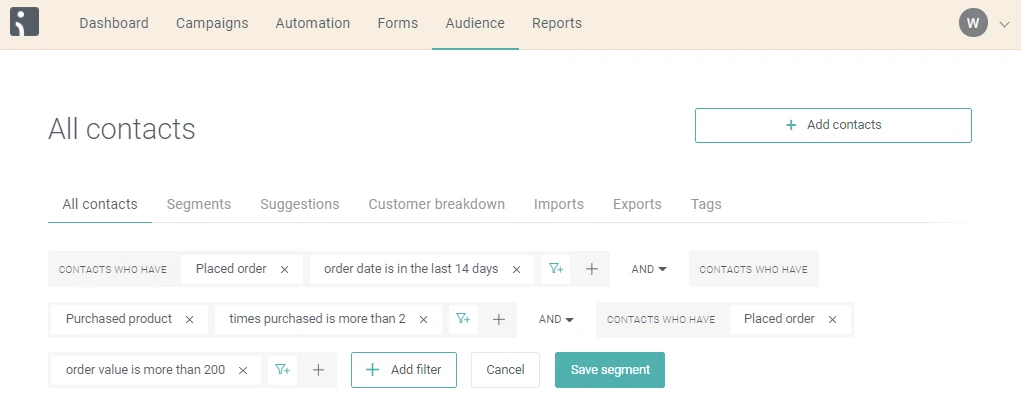
With a platform like Omnisend, you can easily create segments for subscribers who purchased in the last 30 days, subscribers who haven’t made a purchase in at least 90 days, those who spend the most, and so much more. And, it’s possible to combine segments to create even more precise segmentation.
5. Optimize for mobile
Everyone has a smartphone. As a result, mobile optimization is a must for any marketer.
To create a great mobile experience:
- Build a user-friendly mobile app. Make it easy for customers to browse, shop, and get support on your app.
- Design mobile-friendly ads. Create eye-catching ads that look good and work well on smaller screens.
- Personalize your campaigns. Use customer data to tailor your marketing messages, making them more relevant and engaging for mobile users.
- Test and improve. Regularly check how your marketing looks on different mobile devices and make updates to keep it looking and working its best.
By focusing on mobile channels and personalization, you can create a better experience for your customers and improve your omnichannel marketing results.
If you already use Omnisend, though, mobile optimization isn’t a concern. Everything you send via Omnisend, including all of your emails, texts, and promotions, is already optimized for mobile so you don’t have to spend additional time or effort making it mobile-friendly.
6. Test, measure and test again
Your omnichannel marketing strategy will get better as you learn from your customers and try new ideas. Good marketing tools can show you helpful information, like which campaigns make the most money or which messages work best for different groups of customers.
For example, Omnisend can create reports for a wide variety of factors so that you’re always informed of which of your campaigns were the best at generating value.
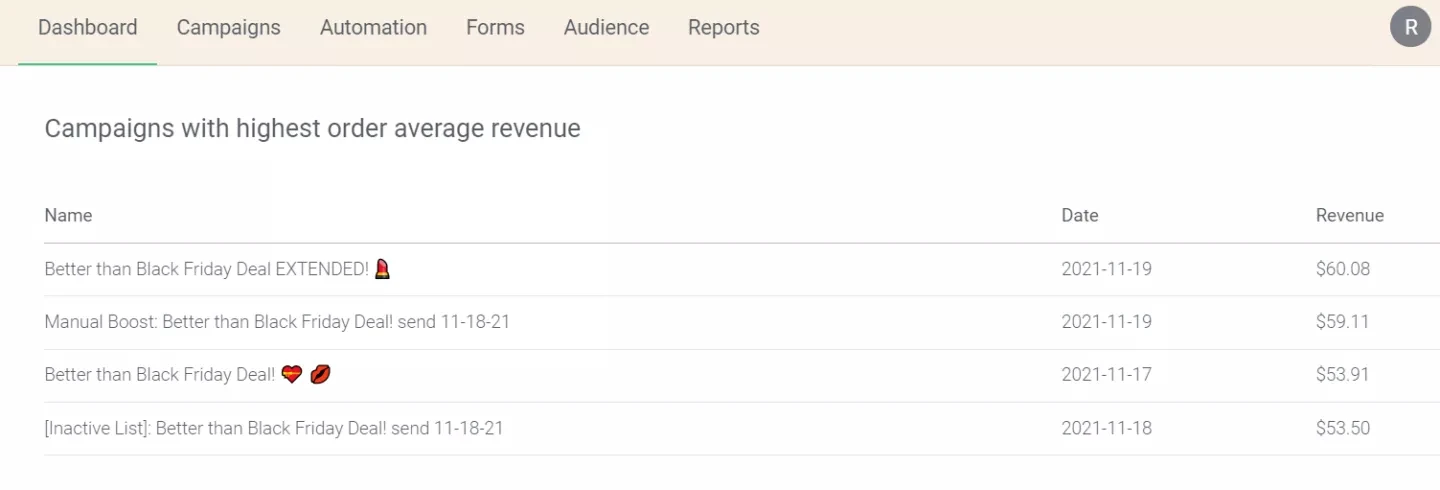
This means you need to be active about testing components, such as:
- Messages
- Headers
- Subject lines
- Images
- Send times
Test your processes regularly to see which audience segments best respond to particular kinds of messages. If you track and measure your data regularly, you’re bound to find the best ways to connect with your customers and make your omnichannel strategy a success.
David Sung, digital marketing director of SM Global Shop, is always testing to uncover indications that a tweak could be beneficial. As a result, the company’s average revenue-per-email (RPE) with Omnisend now clocks in at $5.84.
Once you have hundreds of thousands of customers in your database, even a .2 or .3 percent increase in any of your metrics can drastically have an improvement on your revenue overall. So I do believe A/B testing is very crucial.
David Sung, SM Global Shop digital marketing director
Omnichannel marketing examples
1. Starbucks
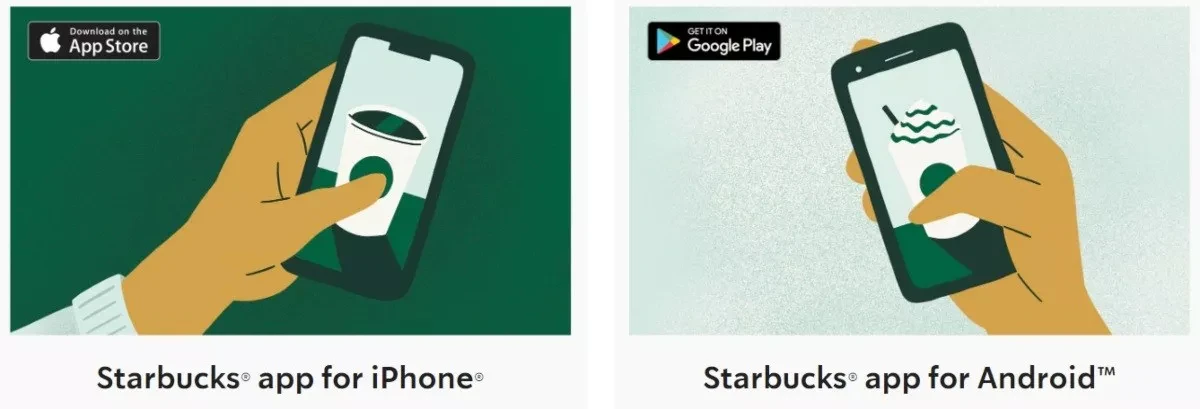
Starbucks has a stellar omnichannel strategy, in many ways thanks to the Starbucks mobile app. While having a rewards app is nothing groundbreaking in and of itself, the company made it the linchpin of its omnichannel strategy, as well as one of the best omnichannel marketing examples.
After signing up for the app, customers get a free rewards card that they can use whenever they make a purchase at Starbucks.
However, what makes the app better than traditional loyalty programs is the possibility to check and reload the rewards card via any channel–the app itself, in-store, on the website or smartphone. The moment a customer makes a purchase, their app gets updated in real time across all channels, with rewards ranging from wireless earbuds to $500 gift cards.
2. Nordstrom

In the wake of the pandemic, Nordstrom emerged as the top-ranked retailer thanks to its exemplary omnichannel strategy that combines online and in-store commerce.
Recently, the company made it possible to instantly buy the items featured on their Instagram page. Meanwhile, Nordstrom’s employees are looking for popular items on its Pinterest page and feature them more prominently on the sales floor.
In addition, Nordstrom’s The Nordy Club loyalty program lets customers gain loyalty points regardless of which channel they use to make their purchase. The Nordy Club members can track their activity from anywhere, shop whichever way suits them, pay in whichever method they choose, and still gain more loyalty points and rewards.
Nordstrom’s excellent approach to omnichannel marketing helped it thrive while others filed for bankruptcy. While some retailers saw ecommerce as a threat, Nordstrom proves that online and offline can co-exist.
3. Nike

Nike is another example of combining online with offline to achieve breathtaking results. And while their physical stores are increasingly digitally enabled, the Nike app stands out as the real success story for the sportswear giant.
The mobile lets customers browse and reserve items in their local store, scan QR codes to pull up products, get product recommendations based on previous purchases, and unlock exclusive access to newest products.
Launched back in 2018, the Nike app now has 250+ million downloads, making it one of the best use case examples of retail omnichannel success.
4. Walgreens

Walgreens is using its mobile app as an essential part of its omnichannel marketing strategy.
The Walgreens app allows customers to check and refill their prescriptions in seconds without having to go to the pharmacy, set up reminders to renew their prescriptions, or have 24/7 live chats with pharmacy experts.
Unlike the Nike app, Walgreens doesn’t offer any flashy out-of-this-world experiences. With that said, it provides Walgreens customers with everything they need to save time and minimize unnecessary personal contact during the pandemic.
This simple yet effective approach proved to be a prescription for success, netting Walgreens the Retailer of the Year 2021 award.
5. Net-a-Porter

To achieve their goals efficiently while providing a great customer experience, Net-a-Porter turned to omnichannel marketing, focusing on three distinct channels:
- A mobile app to keep customers inside their ecosystem. Customers can interact with each other and share images of products they like from any brand. The app’s technology recognizes shared product images and locates the closest match to Net-a-Porter’s inventory, then recommends it to users.
- Email marketing to help guide subscribers in following up on their store-related activity.
- Ad retargeting to attract visitors who abandoned their site before making a purchase.
This strategy is credited for substantially contributing to Net-a-Porter’s 16.9% year-over-year growth in 2020. Of that year’s more than €2.5 billion ($3 billion) in sales, 50% came from mobile, with the remaining contributions stemming from email marketing, retargeting, organic and other channels.
Order values also increased to €328 (about $400), which is one of the highest for any online store, beating even the likes of Amazon.
6. Sephora
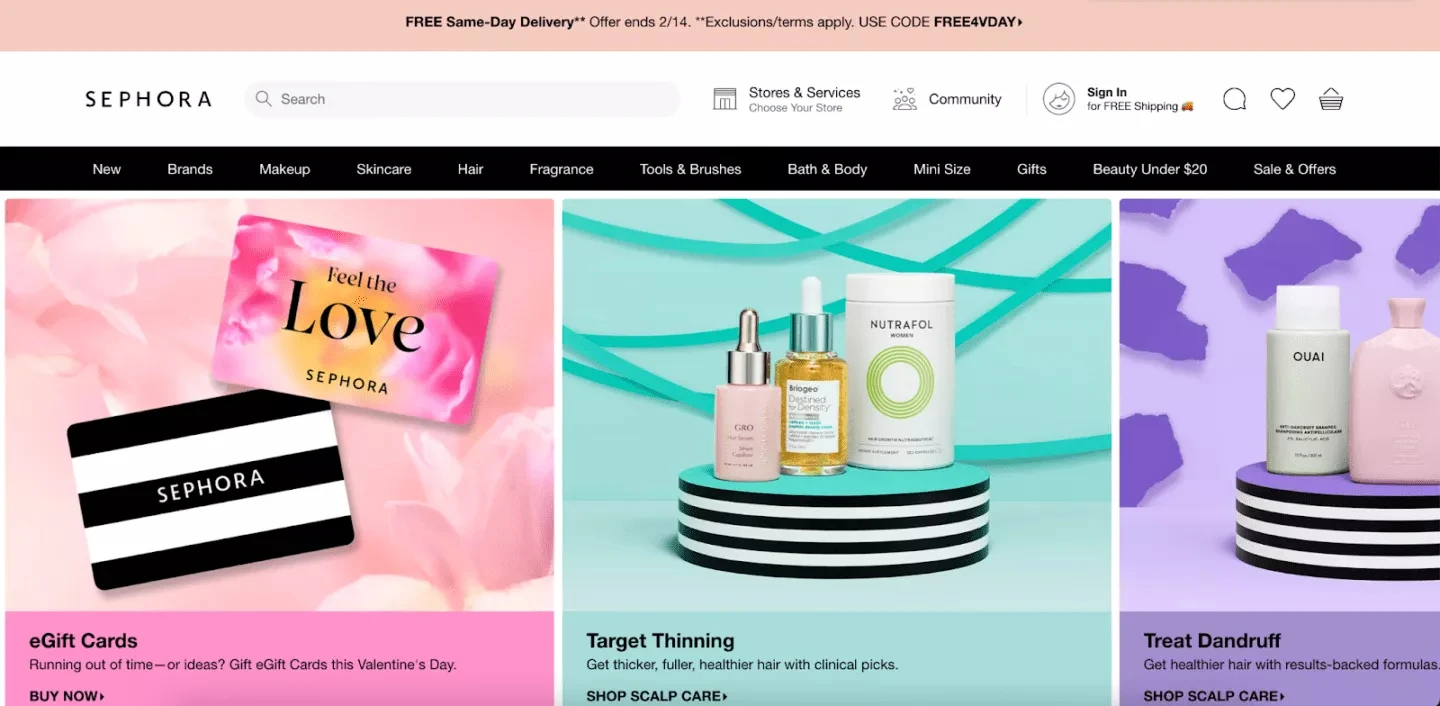
Sephora’s successful transition to ecommerce during the pandemic showcased the power of their omnichannel strategy. They combined digital and in-store experiences to create a seamless shopping journey for their customers.
Here’s how Sephora put customers at the center of their omnichannel approach:
- Virtual try-on and Color IQ. Customers can use augmented reality to try on products, and Color IQ technology helps them find the perfect foundation match.
- In-store product logs. After makeovers, Beauty Advisors email customers a list of products used, making it easy to recreate the look at home.
- Personalized website experience. When customers visit Sephora’s website, location data is used to show the nearest store and available in-store services.
- AI-powered chatbot. Sephora’s chatbot offers friendly product advice and personalized recommendations without being pushy.
By focusing on customer needs and integrating online and offline experiences, Sephora’s omnichannel strategy has been a huge success.
7. Allbirds

When ecommerce startup Allbirds expanded into physical stores, they aimed to provide the same great experience customers enjoyed online. Customer data played a crucial role in creating a seamless omnichannel journey.
Here’s how Allbirds used data and technology to improve customer experiences and boost conversions:
- ‘Buy in-store, ship to customer’ technology. Allbirds used Shopify’s technology to make transactions quicker and more convenient for customers with saved shipping and billing information.
- Informed inventory decisions. Data helped Allbirds understand which products were in high demand and make better stocking choices.
- Customer behavior tracking. By tracking customer behavior, Allbirds learned more about shopper preferences and needs.
- Optimized store layout. With better inventory management, Allbirds could maintain intimate retail spaces without needing large storage areas.
Allbirds’ approach to omnichannel marketing combined customer data, technology, and a unified experience, resulting in a successful and efficient shopping experience for their customers.
Omnichannel marketing tools
- Omnisend: For omnichannel marketing with email, SMS, and push notification
- Tidio: For live chat and chatbots
- Hubspot: For CRM
- Buffer: For managing social media
- Cin7: For inventory management
1. Omnisend: For email, SMS, and push notifications
Omnisend is a great choice for omnichannel marketing without breaking the bank. It offers an affordable way to connect with your audience across multiple channels and is 40% cheaper than other top providers.
But Omnisend is more than just wallet-friendly. It’s an all-in-one solution that makes creating and sending omnichannel campaigns a breeze. With ready-to-use automation workflows, you save time and get better results. Plus, you get to send international SMS, as well as web push notifications.
A platform such as Omnisend was built not just for ecommerce, but for brands that want to explore all that omnichannel marketing provides.
How Omnisend helps with omnichannel marketing:
- Collect customer data for journey maps with popups and landing pages
- Analyze data using built-in analytics
- Personalize campaigns through ecommerce-tailored segmentation
- Manage email, SMS, and push notifications in one app
- Integrate easily with websites, especially Shopify Plus
- Use marketing automation to instantly deliver messages based on a subscriber’s activity, with the option to combine multiple channels in the workflow
With Omnisend, you get all the powerful omnichannel marketing features at an incredibly budget-friendly price.
2. Tidio: For live chat and chatbots
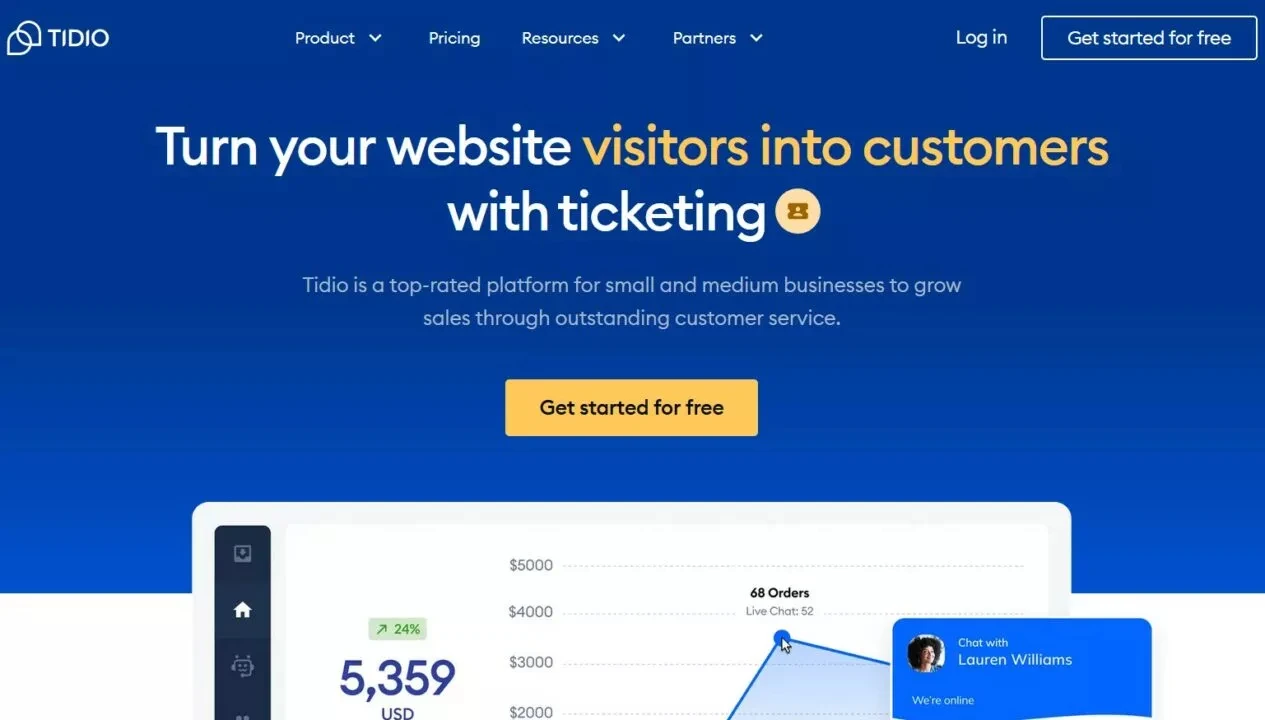
Tidio is an excellent choice for businesses looking to enhance their customer experience through live chat and chatbots. This easy-to-use tool helps you engage with your audience in real-time and automate customer interactions.
Not only is Tidio user-friendly, but it also offers a range of features that make managing your live chat and chatbot communications seamless. With customizable chatbots, you can automate responses, guide customers through their journey, and provide instant support.
How Tidio helps with omnichannel marketing:
- Improve customer support with real-time live chat
- Automate interactions using AI-powered chatbots
- Personalize chatbots to match your brand and style
- Integrate with popular platforms, like Shopify and WordPress
- Collect customer data for better insights and targeting
With Tidio, you can elevate your omnichannel marketing by providing exceptional live chat and chatbot experiences for your customers.
3. Hubspot: For CRM
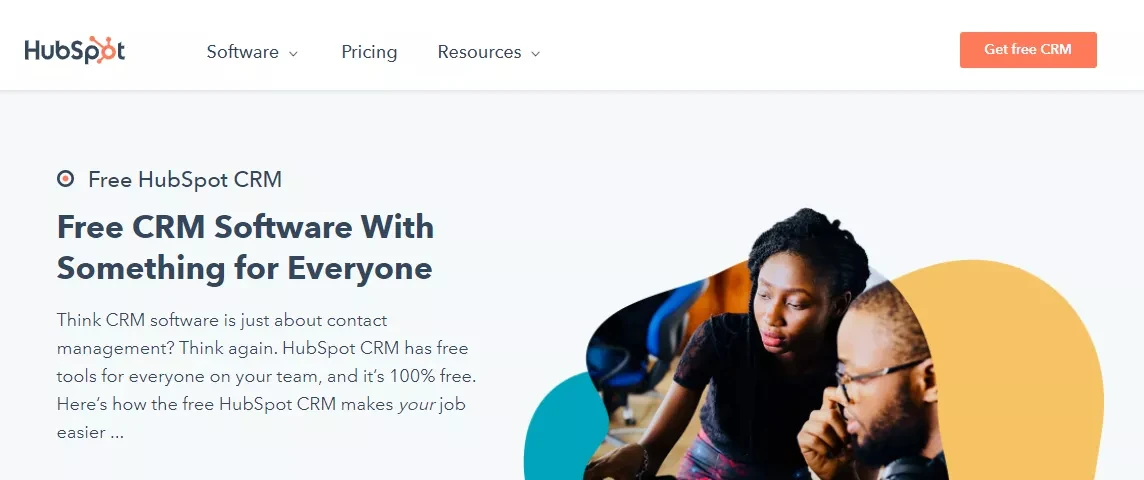
Hubspot is a top choice for businesses seeking a powerful CRM to support their omnichannel marketing efforts. This robust tool helps you manage customer relationships, track interactions, and streamline your sales and marketing processes.
What sets Hubspot apart is its extensive feature set that makes organizing and analyzing customer data a breeze. With its user-friendly interface and customizable dashboards, you can keep an eye on every aspect of your customer journey.
How Hubspot helps with omnichannel marketing:
- Centralize customer data for a unified view of interactions
- Manage leads and track their progress through the sales funnel
- Automate marketing tasks and follow-ups for improved efficiency
- Personalize campaigns based on customer behavior and preferences
- Integrate with a wide range of platforms, including popular ecommerce solutions
By choosing Hubspot as your CRM solution, you’ll be well-equipped to execute successful omnichannel marketing campaigns that drive sales and customer satisfaction.
4. Buffer: For social media

Buffer is the go-to choice for businesses that want to excel in social media as a part of their omnichannel marketing strategy. This versatile tool allows you to plan, schedule, and analyze your social media content with ease.
What makes Buffer stand out is its user-friendly interface and powerful features designed to simplify social media management. With built-in analytics, you can measure your performance and optimize your content for better engagement.
How Buffer helps with omnichannel marketing:
- Schedule and publish posts across multiple social media platforms
- Plan your social media content with a visual calendar
- Analyze your social media performance to fine-tune your strategy
- Collaborate with team members for efficient content management
- Integrate with popular tools and platforms to streamline your workflow
By using Buffer for your social media management, you can effectively incorporate social media into your omnichannel marketing efforts and boost your online presence.
5. Stitch Labs: For inventory management
Efficient inventory management is key for delivering seamless omnichannel customer experiences. Stitch Labs is a tool designed to help businesses stay on top of their inventory, whether customers are shopping on Instagram, Amazon, or in a physical store.
With Stitch Labs, you can streamline your operations management and ensure inventory updates in real-time.
How Buffer helps with omnichannel marketing:
- Automatically manage orders and provide reliable shipping with innovative automation features, keeping your inventory up to date across all channels.
- Streamline order fulfillment across third-party logistics providers and warehouses with accuracy, avoiding manual tracking of products and sales.
By using Stitch Labs, you can maintain precise inventory control, enhance your omnichannel marketing efforts, and ultimately deliver a top-notch customer experience across all touchpoints.
Omnichannel marketing: Summary
Once you get your feet wet with putting together your omnichannel marketing strategy, we suggest you dig into our resources for deeper insights and more inspiration, such as:
- How to create an omnichannel customer journey
- Missed opportunities in your omnichannel marketing
- Omnichannel vs. multichannel: how to know the difference
- 5 omnichannel marketing ideas for holiday campaigns
- How SMS can propel your omnichannel marketing strategy
Don’t hesitate to experiment with omnichannel marketing and see the impact on your business. Learn from real-life examples and case studies to fine-tune your approach, and stay up-to-date with the latest trends and tools.
Give omnichannel marketing a try, and watch your brand’s success grow as you build lasting connections with your customers.
Source from Omnisend
Disclaimer: The information set forth above is provided by Omnisend independently of Alibaba.com. Alibaba.com makes no representation and warranties as to the quality and reliability of the seller and products.

